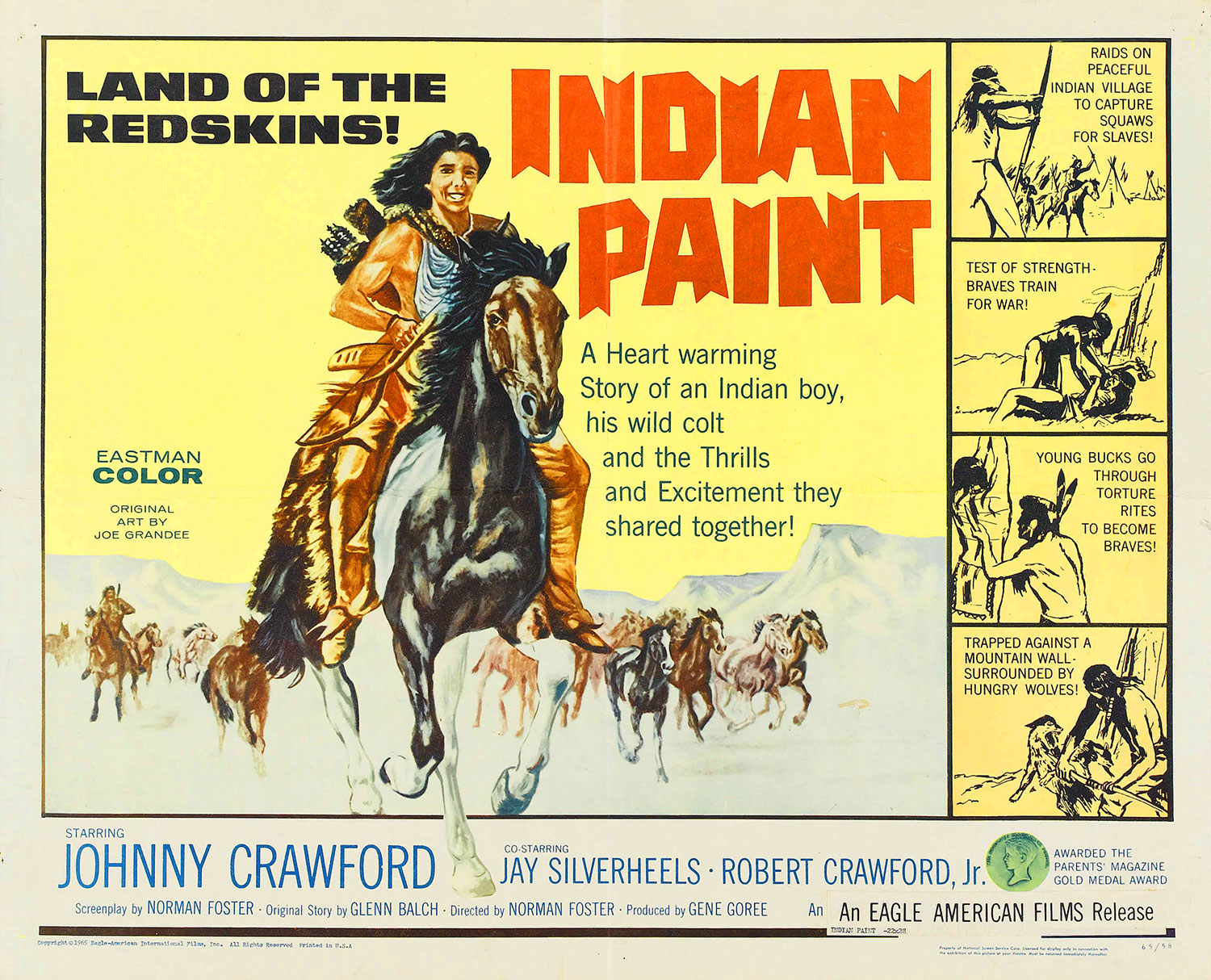It sure is. As always, I maintain it is pointless to try and impose today’s morals on the past. That doesn’t mean we can’t learn from them and become better people…by pointing and laughing at those freaking idiots.
From 1965, Indian Paint is the rare western flick that takes place in the days before the arrival of Europeans. There isn’t a single Caucasian character in the film. What there are, though, are a bunch of white people slathered in makeup so red it looks like they were rolled around in the mud in Utah. Even the actual Native Americans in the cast, of which there were two, by my count, were covered in it. This flick represents the type of deep, ingrained, and completely clueless racism which used to be okay not just in the film industry, but in society at large. It’s a useful reminder that progress has been made, despite the re-emerging bravado of white nationalism.
It is not okay anymore to make a kid’s adventure movie featuring a cartoon version of Native American culture, starring white people in redface. It’s just not, regardless of the intentions of the storytellers.
Indian Paint was adapted from the novel of the same name by Glenn Balch, an author who made a career of writing westerns for boys. It probably was not his intention to denigrate an entire people, nor was that the intention of the filmmakers. It’s not racism by accident,  either. It’s embedded and naïve — a mark of cultural ignorance rather than hate. That also makes it an insidious form of racism, but also a form that has been relegated to the past. But, is Indian Paint a good movie?
either. It’s embedded and naïve — a mark of cultural ignorance rather than hate. That also makes it an insidious form of racism, but also a form that has been relegated to the past. But, is Indian Paint a good movie?
Hell, no! This flick is shitty, which is why I watched it.
Adapted and directed by Norman Foster, who was a workaday director in the pre-auteur era of Hollywood, Indian Paint features successful child actor Johnny Crawford, eighteen years of age during filming, as Nishko, son of tribal chief Hevatanu (TV’s Tonto himself, Jay Silverheels).
Indian Paint was something of a family affair for Crawford, as his father, Robert, was an associate producer and editor, and his older brother, Robert Jr., played Wacopi, Nishko’s friend. Did nepotism get Johnny his role? Perhaps, but the kid had an Emmy nomination under his belt years before this role. Anyway…
The film is a story told in three simple acts, revolving around Nishko’s love for a foal he hopes to ride someday.
The first act is war, wherein a neighboring tribe has raided Nishko’s village, seizing women and the beloved young horse. Nishko’s tribe wins the war, and recovers what was stolen.
The second act features Nishko’s entrance into manhood and growing attachment to the horse, which he is desperate to tame. It also features a wild moment where Nishko is about to sacrifice the horse to the gods but receives a last-minute reprieve.
The final act is all about freedom, as, having realized that the horse can never be tamed, Nishko sets it free to run with wild stallions. But, that would be too much of a bummer for a kid’s flick, so the horse races back to Nishko, just in time to drive off a pack of wolves looking for a meal.
This flick is classic cheese. It’s unsophisticated and quaint. I can’t call it an innocent story, what with all the racism. It’s a snapshot of a different time, different morals, and a different storytelling ethos, one where films for American boys were about adventure, freedom, personal sacrifice, and a rigid morality. It’s soft indoctrination as entertainment.
As far as its watchability is concerned, I’ve seen worse. There is nary a moment that will jump out and grab a viewer’s attention, but should one watch this as a relic, it can leave one rapt. As actual entertainment, well, if our eyeballs weren’t connected to our skulls, they’d roll right out.
Indian Paint takes over the #210 spot from Horror Rises from the Tomb. Watch it, and feel superior to those knuckleheads from Hollywood’s past.
